Repton was an BBC Micro puzzle game I first came across in 1985. It was one of the very, very few computer games that really clicked with me and I have had an on-off relationship with the lizard in the yellow jersey ever since!
In 2010, I was involved in the BBC Micro and Electron release Repton The Lost Realms. I created the cover art, the loading screen, the packaging design, many of the graphics for the game and a set of levels.
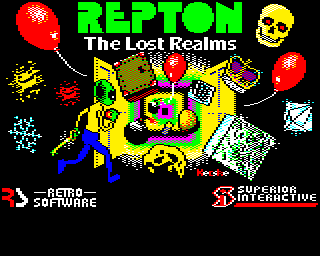
When the game was released, it was always our intention to do a follow-up release containing additional levels for the game. This was very important as the levels supplied with the game were far too hard for casual players, and it was crying out for some more accessible levels.

Work on the follow-up project, originally titled Repton The Unreal Realms began immediately after the original release. The idea behind the “unreal” part was to make the graphics rather strange, with geometric patterns and optical illusions, and Katie Roseine even suggested a level set which was monochrome and done with outlines.
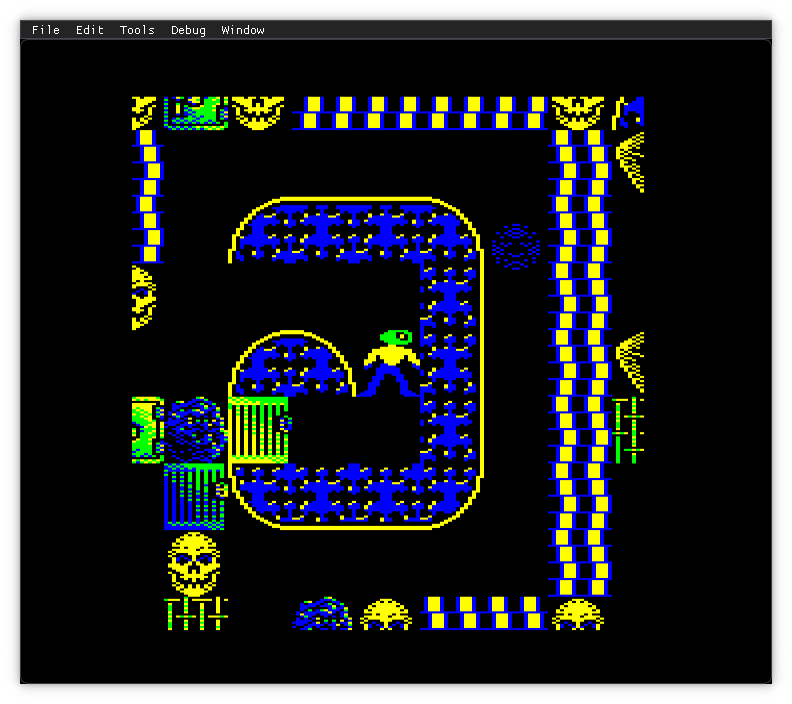
Some nods to that concept are still to be found in the finished games with Escher reptiles, Penrose tri-bars and even a wall section based on the Bristol Café Wall illusion.
Dave Moore of Retro Software thought this concept was a little too ambitious and re-titled the project to Repton The Secret Realms. He (quite correctly) thought graphics should be slightly more abstract than Repton The Lost Realms but should still be very traditional as we were trying to appeal to casual players.
The project was going very well, but was then suddenly abandoned due to a disagreement over graphics which was really my fault; I always prefer to walk away from disagreements rather than work through them.
Earlier this year I noticed that Michael S. Repton had started to create “Let’s Play” videos of the Repton The Lost Realms screens and went on to create videos of the completed Repton The Secret Realms levels. It seemed a crying shame to leave the project unfinished, so I got back in touch with Michael and Katie Roseine and to my delight we all decided to carry on where we left off.
When I created the graphics for the Repton The Lost Realms, I used a very complicated technique of creating the graphics in The GIMP, chopping them up into slices of 8 pixels in height, placing the slices contiguously on a MODE 5 shaped image, converted the image into BBC Micro format and then spliced the graphics portion of the resulting image into a Repton The Lost Realms level set file.
There had to be an easier way, and in this case the “easier” way was inspired by the Acorn Electron game projects written by David Boddie—Castle Raider and Jungle Journey. Whenever he wrote a game, David wrote a suite of tools in Python with the Eric Ide to make programming the game easier, and I thought I had to do something like that for Repton The Secret Realms.

I wrote three Python tools for Repton The Secret Realms: a Python implementation of Acorn DFS; a tool to convert PNG graphics into MODE5 format; and a tool to put the converted graphics into Repton The Lost Realms files.
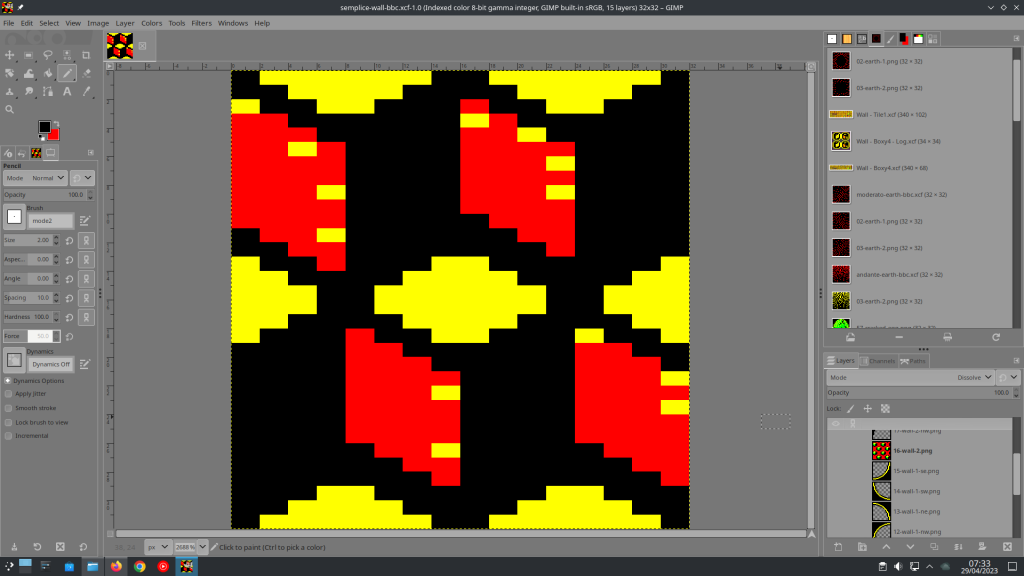
For each set of levels, the graphics all live in a single GIMP XCF file. They are then exported from The GIMP XCF file as separate indexed PNGs into a folder.

I then run a single Python command and have them converted into BBC Micro format and placed into the Repton The Lost Realms file of my choice. When I got it all working it really made me feel like a proper programmer!

Back when I was originally working on these projects, I used to compile the Linux emulators for the BBC Micro and Acorn Electron from source, and the threads documenting the difficulties I experienced in doing this are still present on the StarDot Forums.
I’m too old (and too busy) to throw away a morning trying to put a library on a PATH variable. I was definitely up for finding for an easier way to install emulators on Linux and, amazingly, I found one.
Thanks to Alan Pope, Tom Seddon’s BBC Micro Emulator b2 (one of my favourite emulators due to the fact that it treats Linux as a first class citizen) is available as a Snap. And, to my delight, Tom Harte has made his ClockSignal emulator available as a Snap as well. ClockSignal is a fantastic multi-machine emulator which I use for emulating the Acorn Electron.

I love ClockSignal as it has an insanely accurate emulation of Aztec PAL Modulator that was found in the BBC Micro and Acorn Electron so you can relive playing games through a coaxial UHF cable on a domestic television set.
As always, it’s the Acorn Electron graphics that take a huge amount of time to create. I tend to create the graphics for the BBC Micro version and then try and create smaller versions for the Acorn Electron. Doing this takes a long time, and a lot of trial and error.
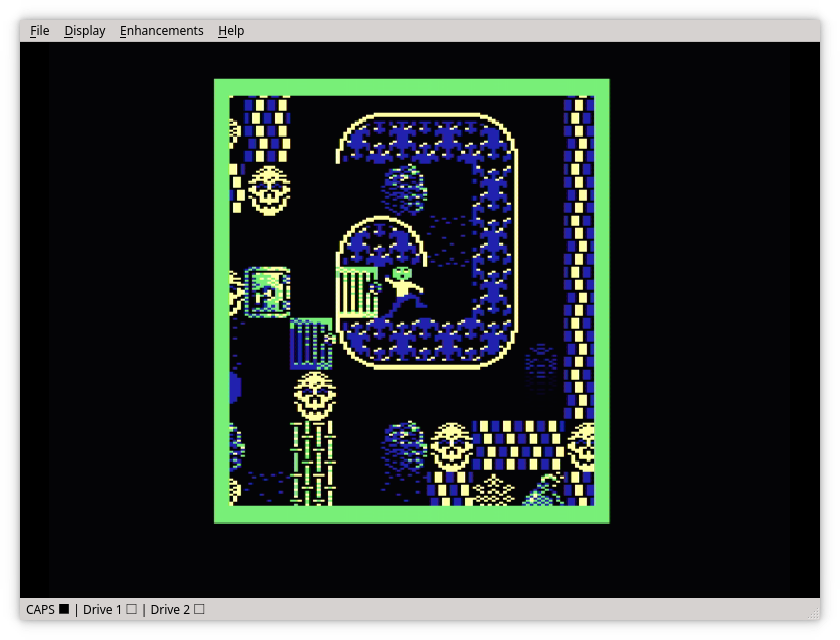
I haven’t yet started work on the cover art or packaging for the game. I have a cover art concept in mind, and will start working on it when I have completely finished the game graphics and level design.

At the moment it’s not clear how many level sets the finished release will have, or when the release will actually take place. However, the project is most definitely under active development and looks set to have a physical release on cassette, 5¼” disc and 3½” disc for the BBC Micro and Acorn Electron. It has the blessing of Superior Interactive and I’ll post updates here as things progress.
Many thanks to Michael S. Repton and Katie Roseine for their help and encouragement in getting this project back on the rails and to Dave Moore and Richard Hanson for their encouragement.
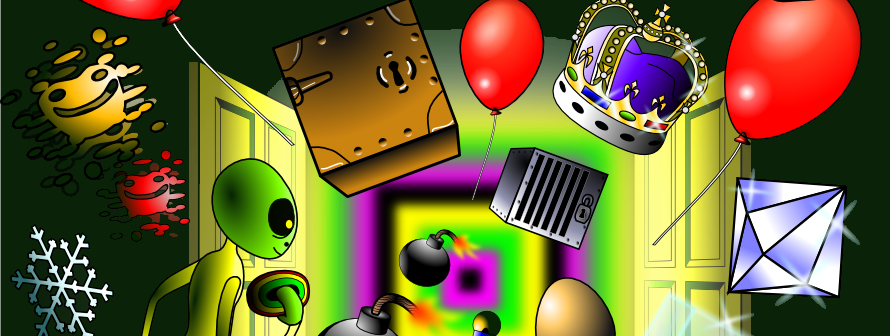
Leave a Reply